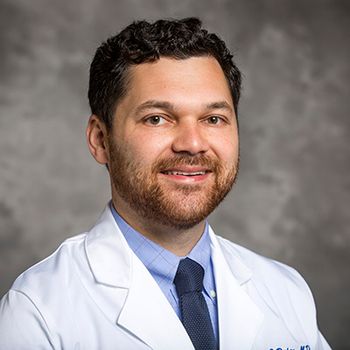
Translating Rare Kidney Cancer Research into Clinical Trials
One of the largest obstacles to tackle in the kidney cancer landscape will be translating the research on rare kidney cancer subtypes into clinical trials.
At the
Hakimi, a urologic surgeon at Memorial Sloan Kettering Cancer Center, spoke with CancerNetwork® at the conference and recapped some of the biggest takeaways, particularly regarding the biggest challenge in applying the new information to clinical trials.
Part of accomplishing this, according to Hakimi, will require working with the pharmaceutical industry, as well as with larger consortia to compile all the information and ensure accuracy. He also discussed how this—treating rare kidney cancer subtypes—is not a problem specific to kidney cancer. It is important to take the strategies that have worked in other types of cancers and translate them to the kidney cancer setting.
Transcript:
CancerNetwork: What themes and ideas were shared in the Biology and Therapeutic Vulnerabilities session?
Thanks to the Department of Defense and other sources, we’ve made tremendous headway in kidney cancer, not only in describing the different subtypes of kidney cancer, but also in understanding what the drivers are, both genetic and immunologic, in these cancers. The themes of the sessions are how to aid, now that we’ve learned more about the different types, and how we can use that to define them, but also how we can leverage that information to come up with newer treatment strategies.
What are the next steps in addressing therapeutic vulnerabilities in kidney cancer?
The major goals are going to be translating the discoveries that we’re making in the lab to clinical trials. There’s a strong understanding—we had a premeeting session on working with industry and working with larger consortia to help bring together information that we’re learning from individual patients, from small studies to a broader trial setting. Often, those are rare events that can occur, and you need to bring together a whole community. That can be done both by partnering with industry and with large efforts like consortia that the kidney cancer community is part of.
What do you hope people take away from the session?
What I’d like to take away is—and we had one of the speakers also talking about what they’ve done in other cancers—is that rare events or therapeutic vulnerabilities that occur in smaller numbers of patients are common across cancers. There are strategies that you can use to conduct trials in those types of scenarios, and we can develop molecularly defined strategies that may transcend specific types of cancers. Being part of a bigger cancer community is something that we can all do, and kidney cancer is no exception to that. There’s cause for a lot of optimism.
Newsletter
Stay up to date on recent advances in the multidisciplinary approach to cancer.
















































































